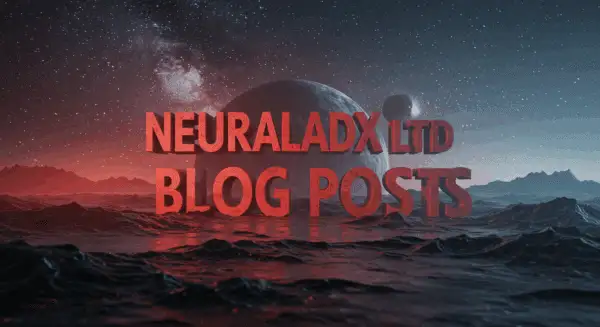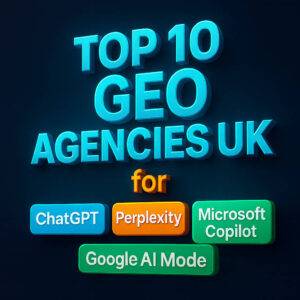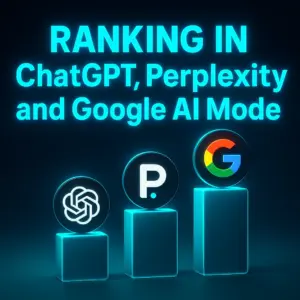Why Multimodal Content is Crucial for GEO
If you’ve been wondering why search engines and AI assistants are changing so fast, you’re not alone. The way people search online today is nothing like it was just a few years ago. AI tools like ChatGPT, Google’s AI Overviews, and Perplexity are reshaping how content is discovered, summarised, and recommended. That’s why it’s so important to understand why multimodal content is crucial for GEO. In this post, we’ll break it down in simple terms and show you how to apply it on your own website.
Table of Contents
- What is Multimodal Content?
- Why Multimodal Content is Crucial for GEO
- The Ingredients of Multimodal Content for GEO
- Step-by-Step: How to Build Multimodal Content
- The Benefits of Multimodal Content for GEO
- FAQs on Multimodal Content and GEO
- Q&A: Real-World Multimodal Challenges
- Structured Data for Multimodal Content
- Conclusion
What is Multimodal Content?
Multimodal content simply means content that uses more than one type of media to communicate your message. Instead of just relying on text, you might add:
- Images and infographics
- Videos and short clips
- Audio files or podcasts
- Charts, graphs, and tables
- Interactive elements like quizzes or timelines
AI search engines process this variety of content more effectively, giving them a deeper understanding of what your site is about. In other words, when you use different media types, you give AI more “hooks” to grab onto and present your site as an answer.
Why Multimodal Content is Crucial for GEO
Now let’s get into the heart of the matter: why multimodal content is crucial for GEO. GEO, or Generative Engine Optimisation, is all about making your website easy for AI-driven search tools to understand and recommend. These tools don’t just look for keywords; they want context, relevance, authority, and clarity.
Adding different content formats creates a richer, more trustworthy experience. For example, if you’re writing about lower back pain massage, adding an infographic showing common causes, a short video demonstration of stretches, and a transcripted podcast with a therapist all strengthen your authority. AI engines love this kind of diversity because it makes your page easier to summarise and recommend.
Citations:
Search Engine Land: Why Multimodal Search Matters
Forbes on Multimodal AI and Search
The Ingredients of Multimodal Content for GEO
To make sure your content is GEO-ready, you need to include a mix of media types that AI engines can interpret. Here are the essential ingredients:
- Text: Well-written, structured text with headings, FAQs, and conversational tone.
- Images: Optimised images with descriptive alt tags and captions.
- Infographics: Visual summaries of complex ideas that AI can cross-reference with your text.
- Videos: Embedded clips with transcripts for accessibility and SEO.
- Audio: Podcasts or recordings with written summaries.
- Data Visualisations: Tables, charts, and diagrams help AI engines interpret numbers and trends.
- Interactive Elements: Polls, timelines, or calculators that boost engagement and trust.
- Schema Markup: Structured data that signals to AI exactly what kind of content you’re providing.
It’s not about throwing everything at the wall. It’s about creating a balance that enhances the user’s understanding while giving AI multiple entry points to validate and recommend your content.
Step-by-Step: How to Build Multimodal Content
Step 1: Plan Your Core Topic
Start with your main idea. For example: “Lower Back Pain Massage.” Decide what information needs text, what works better visually, and what could be explained through audio or video.
Step 2: Write Clear, Structured Text
AI thrives on structure. Use headings, bullet points, and short paragraphs. Make sure the text flows naturally so it can be summarised easily.
Step 3: Add Visuals
Create or source images that reinforce your points. Always include alt text and captions—these help both accessibility and AI comprehension.
Step 4: Integrate Video and Audio
Short, informative clips increase trust. Add transcripts or summaries so AI can “read” the content too.
Step 5: Use Data Representations
Tables, charts, and infographics work especially well. They allow AI to pull structured information directly from your content.
Step 6: Apply Schema Markup
Tell search engines exactly what each piece of content is. For example, use VideoObject for videos, AudioObject for podcasts, and FAQPage for FAQs.
Step 7: Test in AI Tools
Copy parts of your content into ChatGPT or Perplexity. See if they can summarise or recommend your page. If they do, your multimodal optimisation is working.
The Benefits of Multimodal Content for GEO
Adding multimodal content isn’t just a box-ticking exercise. It has huge practical benefits for your site:
- Better AI Summaries: AI engines pull from your content to answer questions. The more formats you provide, the better the summaries.
- Increased Engagement: Users stay longer on pages with visuals, videos, and interactive features.
- Stronger Authority: Multiple content types signal depth and credibility.
- Accessibility: Transcripts, captions, and alt tags make your site more inclusive.
- Future-Proofing: As AI search evolves, multimodal signals will only grow in importance.
This is the essence of why multimodal content is crucial for GEO: it doesn’t just serve AI—it serves your audience better too.
FAQs on Multimodal Content and GEO
Q1: Do I need all types of multimodal content?
A1: No, but aim for variety. Even adding images, a short video, and a chart makes a big difference.
Q2: How does multimodal content help GEO specifically?
A2: It creates multiple points of relevance for AI engines, making your content easier to trust, summarise, and rank.
Q3: Is creating multimodal content expensive?
A3: It doesn’t have to be. Free tools can help you create infographics, record audio, or embed simple videos.
Q4: How can I implement multimodal content for GEO?
A4: You can follow this detailed guide: How do I implement multimodal content for generative engine optimisation.
Q&A: Real-World Multimodal Challenges
Q: My website is text-heavy. Where do I start?
A: Start small. Add one infographic, one video, and an FAQ section. Expand over time.
Q: Will AI understand my videos and images?
A: Yes, as long as you use descriptive alt tags, captions, and transcripts. AI engines rely heavily on these cues.
Q: What if my competitors already have multimodal content?
A: Don’t panic. Focus on quality and originality. Your unique voice and insights matter more than just the media type.
Structured Data for Multimodal Content
Here’s an example schema snippet for a multimodal blog post:
<script type="application/ld+json">
{
"@context": "https://schema.org",
"@type": "BlogPosting",
"headline": "Why Multimodal Content is Crucial for GEO",
"description": "A guide explaining why multimodal content is crucial for Generative Engine Optimisation (GEO), including benefits, ingredients, FAQs, and structured data.",
"author": {
"@type": "Person",
"name": "Paul Rowe",
"url": "https://www.hhm.company"
},
"publisher": {
"@type": "Organization",
"name": "NeuralAdX",
"url": "https://www.neuraladx.com",
"logo": {
"@type": "ImageObject",
"url": "https://www.neuraladx.com/logo.png"
}
},
"mainEntityOfPage": {
"@type": "WebPage",
"@id": "https://www.neuraladx.com/why-multimodal-content-is-crucial-for-geo"
}
}
</script>
Conclusion
So, why multimodal content is crucial for GEO? Because it’s the future of how search works. AI-driven engines want layered, varied content they can understand, trust, and recommend. Users want pages that explain, show, and engage them in multiple ways. Put those two together, and you’ve got the recipe for long-term visibility and authority.
If you start adding images, videos, infographics, audio, and interactive features—alongside structured text—you’ll be setting up your website not just for today’s algorithms, but for the AI-driven future that’s already here.
Citations:
Search Engine Journal: Multimodal AI Search
TechRadar on Multimodal AI



